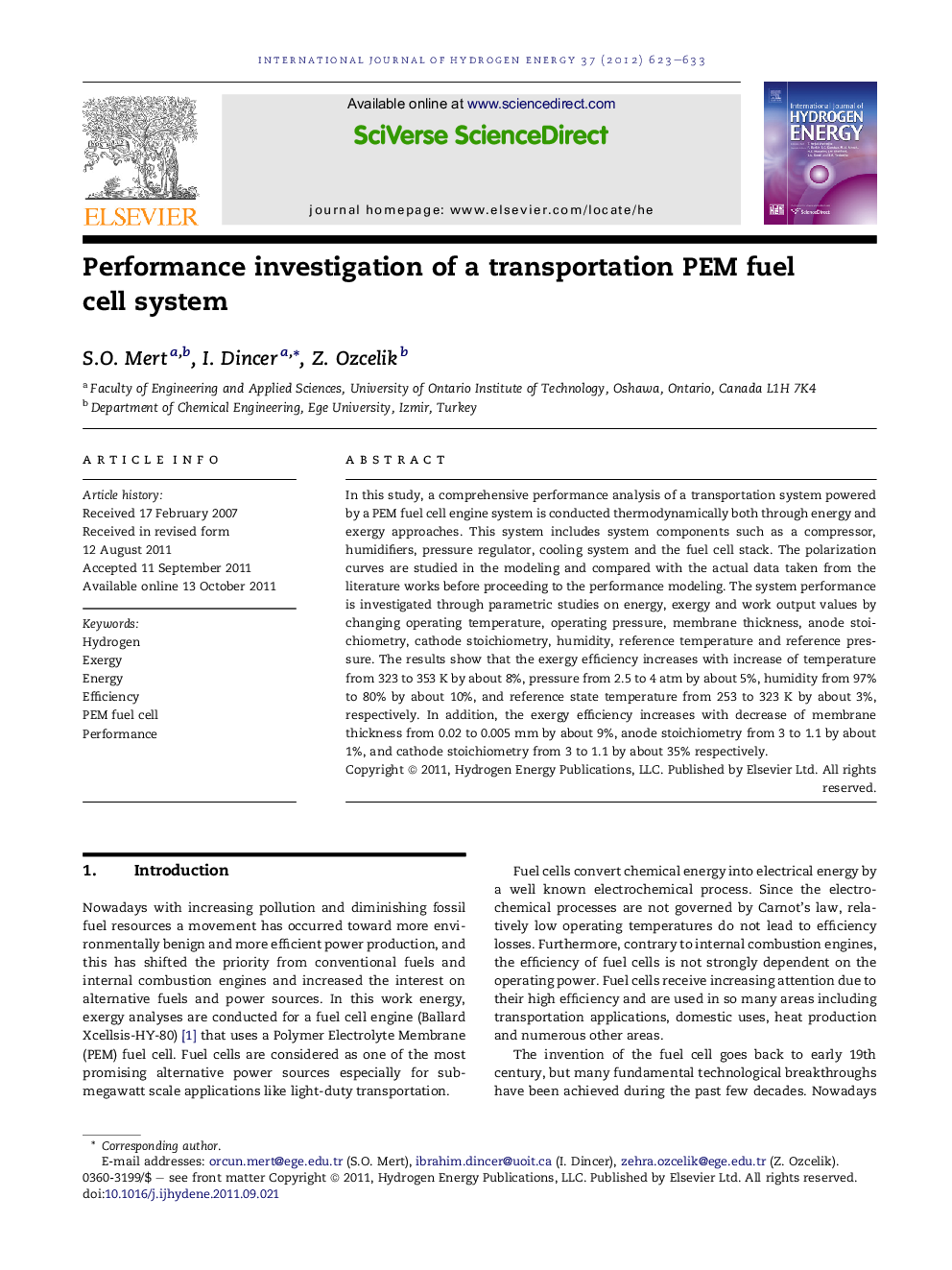| Article ID | Journal | Published Year | Pages | File Type |
|---|---|---|---|---|
| 1277176 | International Journal of Hydrogen Energy | 2012 | 11 Pages |
In this study, a comprehensive performance analysis of a transportation system powered by a PEM fuel cell engine system is conducted thermodynamically both through energy and exergy approaches. This system includes system components such as a compressor, humidifiers, pressure regulator, cooling system and the fuel cell stack. The polarization curves are studied in the modeling and compared with the actual data taken from the literature works before proceeding to the performance modeling. The system performance is investigated through parametric studies on energy, exergy and work output values by changing operating temperature, operating pressure, membrane thickness, anode stoichiometry, cathode stoichiometry, humidity, reference temperature and reference pressure. The results show that the exergy efficiency increases with increase of temperature from 323 to 353 K by about 8%, pressure from 2.5 to 4 atm by about 5%, humidity from 97% to 80% by about 10%, and reference state temperature from 253 to 323 K by about 3%, respectively. In addition, the exergy efficiency increases with decrease of membrane thickness from 0.02 to 0.005 mm by about 9%, anode stoichiometry from 3 to 1.1 by about 1%, and cathode stoichiometry from 3 to 1.1 by about 35% respectively.
► Comprehensive study of a transportation system powered by a PEM fuel cell engine system. ► Analysis of this system both energetically and exergetically. ► Investigation of performance assessment through energy and exergy efficiencies. ► Multiple parametric studies on how efficiencies change with operating conditions and system parameters.
